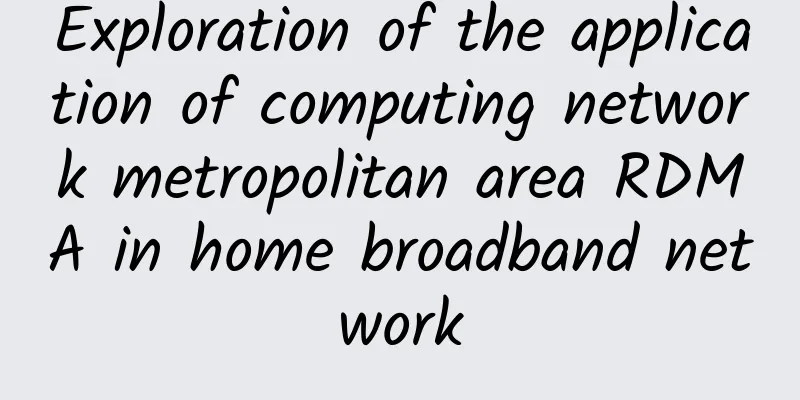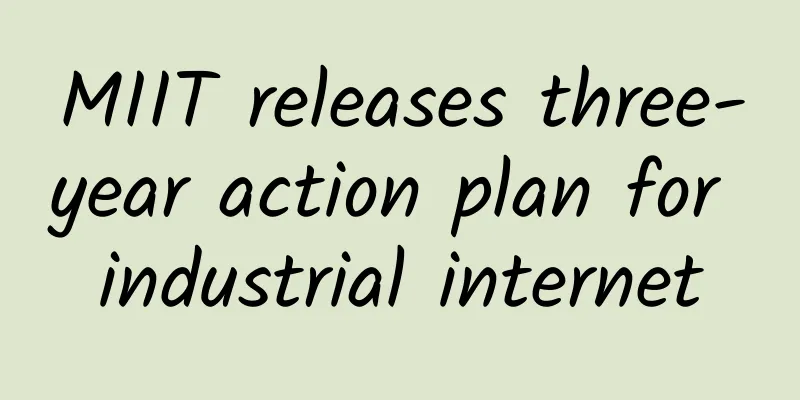Technical Life Part 5-A brief discussion on how to become the number one technician?

|
Preface Most people have their own fixed thinking patterns, and there are invisible shackles that constrain their thinking, which leads to the behavior being constrained as well. Therefore, in the eyes of others, there will be such a phenomenon: some things that should be done are not done, and some things that should not be done are done a lot. Let's put aside the constraints that people must abide by in social activities, such as public order and good customs, social morality, laws and regulations, etc., and only talk about what invisible things may be constraining everyone in work, or in "doing things", and discuss with everyone how to see these constraints, break these constraints, so as to get the opportunity to stand at a higher level and complete the transformation of their own roles. It is very important to recognize the mindset of each person in daily work, which helps to change one's perception of many things, and this change will also bring about fundamental changes in behavior. In other words, theoretical analysis and practice can be used together to achieve an impact on one's actual life. So in today's article, we will first discuss the self-cognition of business R&D students, or the self-perception of most business R&D students, and then see whether there are already some fixed mindsets that everyone ignores within this common self-perception; then we will discuss the reasons for the fixed mindsets, and how to break through the self-constraints caused by inadequate cognition; finally, we will explore what kind of cognition business R&D students should have, and how to complete their role transition from ordinary development to number one technical position through practice. The common self-perception of business R&D colleagues with stereotyped thinking, the causes and solutions 1. What is the common and stereotyped self-perception of business R&D students? From the time they choose their majors in college, "programming", "technical skills" and "big shots" seem to have great appeal to people majoring in science and engineering. After graduation, all people majoring in information technology still have this "becoming big shot" complex, which drives them to continue learning and accumulating knowledge at work after they move from campus to work (of course, it is possible that it is not the "big shot" plot that drives R&D students to work hard to improve their abilities, but the "cruel reality" - "not understanding", "not knowing", "not being able to do" may be "slapped in the face by reality"), improve their technical level, and continue to work hard in the direction of the "big shot" they admire, completing the first stage of personal growth. It is precisely this development path that has gradually enabled R&D colleagues to identify themselves with the role of "technical personnel". Therefore, most business R&D personnel regard "writing code" and "doing technology" as the main content of their work, and think that they are "doing technology". The formation of this cognition is jointly promoted by the surrounding environment and personal daily behavior. This self-cognition itself is correct, but only this cognition is wrong, and it is a one-sided understanding of the individual role. Driven by this self-cognition, R&D personnel will focus on coding standards, code performance, coding skills, R&D efficiency, new technologies, various high-sounding technical terms and the implementation principles behind them; but if a R&D personnel only drives himself to take actual actions through this cognition, then this action itself and the results obtained by the action cannot meet the requirements of the external environment in which the R&D personnel are located. This is why it is said that most business R&D personnel now have a fixed mindset in their cognition of themselves. Objectively speaking, the cognition of most R&D colleagues is that they only focus on the requirements of their default role (R&D) for themselves (having sufficiently high technical capabilities), but do not pay attention to the needs of the surrounding environment. This deviation in focus causes a mismatch between "actual actions" and "environmental requirements", which will bring many problems, and these problems cannot be solved by taking actions only from the original cognitive level. 2. What is the reason for the mismatch between R&D students’ self-perception and the environment? One situation is that the environment you are in has changed, but from the beginning you have a wrong understanding of the requirements of the environment and are not aware of the difference, which leads to the mismatch between "environmental requirements and personal behavior results" becoming larger and larger over time. Only when it becomes too big to be ignored will it be taken seriously, and reflection and adjustments will be made. However, this adjustment is forced, not proactive, and can be understood as an unconscious stress response. The next time you encounter the same problem, people at different levels will have different reactions: Students who lack insight will allow this mismatch to continue to cause problems that cannot be ignored, and then "unconsciously" solve them; For example, fresh graduates often cannot adapt to social work and life. After a couple gets married, the more sensitive one will feel that the other has changed. This is because the individual's environment has changed, and the requirements for the individual in the environment have also changed. Therefore, when your personal environment changes, such as going to a new company, changing to a new team, having more subordinates, changing the direction of the business, or being responsible for a new business, etc., you must be sensitive enough to these changes in the environment and check whether the changes in the environment have created new and different requirements for yourself. To put it bluntly, you need to examine whether your role has changed due to changes in the environment, and whether you need to use the changed role to handle things. Another situation is that the environment you are in has not changed, but you have changed over time, which has led to new requirements for your changes in the environment. However, since you have not felt the changes in the environmental requirements caused by your own changes and have not made corresponding timely adjustments, new mismatches will occur. For example, for students who have just been promoted, the environment's requirements for you have changed as your abilities have improved. You must respond to these requirements with a new role, and you cannot continue to use your original role and way of doing things. Therefore, everyone should also be sensitive enough to their own personal changes, check whether their changes have caused different requirements of the environment, and check whether their existing way of doing things can meet these changes. If not, analyze what kind of role can meet them, and then change your personal cognition and do things in this role . In summary, "the environment has changed but you haven't changed, or you have changed but the environment hasn't changed", you need to analyze what the environment requires of you, and judge whether the existing cognitive-driven behavior can match this requirement; if it can't match, then you need to analyze what kind of behavior can match the new requirement, and analyze which role should do this behavior, and then you will know the direction you want to change. This theory and conclusion are not only applicable to business development, but also universal, and simply discuss the issue of "whether the requirements of the individual and the environment match". These theoretical analyses are essentially using the theoretical method of "On Contradiction" to analyze the contradiction between "human behavior and results and the requirements of the environment" in "man and environment". This contradiction is a unity of opposites, and it will change with time, environment, and individual changes. Let us return to the issue of business R&D students from the boring theoretical analysis. Business R&D students have often experienced both situations from the time they first join the company to the time they grow into a technical backbone with good technical skills. In the first case, after graduating from school and joining the workforce, experiencing changes in the environment, and experiencing the "society's beating", most people get through this stage by improving their personal technical skills. This solution to the problem also brings a lot of trouble to everyone when they experience the second case: According to experience, improving personal technical skills can cope with environmental requirements, but in fact, as you grow up, the environment no longer has only technical requirements for you. Continuing to improve your technical skills can only improve your personal technical skills , and cannot make up for the mismatch between the environment's requirements for you and your behavior. Many R&D leaders or technical backbones have had such painful experiences, thinking that they will be appreciated if they have good skills, and there will be no problem. But the problem itself has nothing to do with whether your personal skills are good or not, but whether you can meet the requirements of the environment for you. Good technology is just to obtain the "qualification" for the surrounding environment to make new requirements for you , not a solution, and continuing to improve personal technical skills is not the real solution. The real solution is a change in cognition, and the change in actual actions brought about by the change in cognition. 3. How can one ensure that personal behavior and its results match the requirements of the environment for the individual? If it is said that the vast majority of R&D students have this cognitive misunderstanding, and will definitely experience the situation in the future that "the environment's requirements for oneself will change as personal abilities improve", then how to solve this problem? In short, "you must have the correct cognition at the beginning, and adjust your role at any time later". First of all, we have made it very clear above what the cause of the problem (mismatch between environmental requirements and personal behavior and results) is. On the premise that we already know the cause, the first thing we need to do is actually very simple, which is to "correctly recognize the requirements of the environment on ourselves." What are the environmental requirements for business development students? Is it "writing code" or "doing technology"? No, "writing code" and "doing technology" are just your work content (and only a very small part), not the requirements of the environment. The environment's requirements for you are: help customers realize business digitalization (no rebuttal or discussion is accepted, because theoretical discussion is meaningless, but you are welcome to test it through practice in any form). In other words, all students doing business development, from the moment you recognize this theoretical analysis, you are no longer just a "R&D engineer", but also a "customer business digitalization engineer". Your default role - R&D engineer, in the current environment, has added new roles and corresponding responsibilities. In terms of cognition, you need to change the old cognition that you have formed since graduation, and try to shift to a new cognition to understand the requirements and expectations of the new role. Therefore, in the past, we all said R&D engineers, JAVA developers, front-end developers, full-stack developers, and go engineers. These categories are divided according to your personal skills, not according to your responsibilities. This traditional way of division has also played a lot of misleading and restrictive roles on you. You should know that if you are in a business team, in addition to the above job roles, no matter what your technology stack is, you should be called a "business digital engineer". This is a "new role" that you have not paid attention to in the past but has always existed. This "new role" will change from being invisible in the past to being visible now, and from behind the scenes to the front of the stage. This role and the corresponding responsibilities will allow you to perceive a new dimension in your original work content. With this understanding, you will realize that the proportion and fundamentality of business knowledge learning, demand analysis, domain modeling, model implementation, and process optimization are no less important than writing code, or even higher. Although all our discussions are about business R&D students, in essence, the same is true for students who develop pure technical platforms. Your task is to help business R&D students digitize, or to help our customers digitize their businesses more efficiently and at a lower cost. Your business needs are technical. If you do not have sufficient modeling and analysis capabilities for the business needs of the technical platform, the higher logical complexity and higher abstraction of the technical system compared to the business system will also cause you great difficulties. The requirement of "helping customers realize business digitization" does not mean that you should stop developing your own technology, but requires you to invest more energy in the word "business" and have a new understanding of it, rather than treating it as "something that prevents me from writing code." So to describe it with a metaphor, it is: R&D students who do business development, no matter what level, what grade, whether they bring people or not, need to walk on two legs of "technology" and "business." This is the meaning of the so-called "correctly recognizing the requirements of the environment for business R&D students": let business R&D students find and pay attention to cultivating their other "walking leg", and use the process of doing business to exercise the strength of this leg, and accelerate the formation of strength and strengthen the strength of this leg by mastering appropriate methodology, because one day you will need to rely on these two legs to lead many "limping" business development students to move forward. Why "limping" development students? Because at present, the vast majority of business development students are only "doing business needs" instead of "doing business", and their business capabilities and technical capabilities do not match, so they cannot "walk on two legs" and can only limp at best. Let me give you an example that all R&D students can understand to summarize the above: If you think you are just a code writer and a technical person, and you only focus on writing code and improving your technical capabilities instead of improving your business capabilities, then you will fall into the pit that your own cognitive bias has dug for you. This bias is essentially the same as the following two things that you can see as problematic: 1. Product managers only need to make product prototypes. 2. Operations personnel only need to push advertisements to users. Now you can feel that "R&D colleagues only need to write code" is a prejudice, right? Demand analysis? Yes! Various communication meetings? Yes! Business development planning? Yes! Many things that most R&D colleagues used to think of as "interfering with my coding" are actually what you have to do in your role, and the proportion of these things is even higher than writing code. Because in the process of helping customers digitize their businesses, writing code and doing technology is only the first step. The following two figures show how ordinary business R&D personnel and the number one technical personnel view the problem. Ordinary R&D personnel look at problems from the perspective of resources. If they look at problems from the perspective of resources, they can only take limited actions on a matter, and ultimately they can only be regarded as resources: The perspective of the technical No. 1 must be transformed into the perspective of the Owner, that is, you are responsible for things related to you (not necessarily the main responsibility, but you must be responsible): What needs attention is the "scope of responsibility" in the second figure above. Ordinary R&D personnel are limited by their own cognition and can only do the innermost work of writing code. As their technical capabilities improve, their scope of responsibility can be gradually expanded, but they will never touch the scope of responsibility of other roles. The scope of responsibility of the No. 1 technical position will gradually expand to the scope of responsibility of all parties related to it, and there may even be some overlap. This is the most intuitive way to show the difference in role playing due to cognitive differences between the two, which leads to differences in behavior and results. How can business R&D students become the top technical personnel? After realizing that what you do is "help customers digitize their business", the requirements for "doing business" will become as important as the requirements for "doing technology". Regarding "doing technology", you can learn basic professional skills in the technical field in college, and there are also a lot of books and projects to learn after work. All R&D are familiar with this; but for "doing business", it seems that there are not so many references or things to learn, and it is more about the accumulation of personal experience. So what should I do if I want to become the number one technical person? Let us first make an assumption like this: "We can fully understand a thing by analyzing its composition, observing its life cycle, and understanding the relationship and interaction between this thing and the outside world throughout its entire life cycle." Since we want to learn the knowledge of "doing business" to enable ourselves to become the number one technical person, we must have a comprehensive understanding of a thing and know what kind of abilities it requires in the process of cognition. These abilities are what we need to gradually exercise through various means. So in order to answer the question of how R&D colleagues can become the number one technical person, we must first understand what a business includes, what its life cycle is, and what is its relationship and impact with the outside world? In the digital age, from an abstract perspective, a business will have the following information that everyone needs to know: 1. What is business? A series of processes involving more than one organization, achieved through information exchange towards a common goal, where each process has a clear purpose and continues for a period of time. 2. What is the purpose and value of the business? Bring benefits to the enterprise by creating value (may be economic benefits, or other benefits, such as brand, reputation, social image, etc.) 3. What aspects does routine business involve in the information age? Value production digital technology business products product operation product sales customer service risk control comprehensive coordination 4. What is the life cycle of the business? Project establishment, development, expansion, maturity, decline 5. What is the relationship between the business and the outside world, and what is the mutual influence? Declaration of value, letting the outside world know what value the business will produce for the outside world and what kind of return it can get. Production of value, creating value through material or virtual production processes. Transmission and diffusion of value, the created value is understood, accepted, and willing to pay for the created value by more external entities. Exchange of value, obtaining economic benefits through value creation. Feedback on value, feedback from external entities on value. Improvement of value itself, making targeted improvements based on external entities' feedback on value. Improvement of the value production process, making various actual or virtual improvements based on internal entities' considerations of the cost and efficiency of creating value. Continuous output of value, continuously providing value to external audiences and continuously obtaining benefits. Extinction of value, as the outside world changes, value no longer has the ability to exchange for benefits and is no longer produced. 6. Capabilities required to launch a business, achieve its goals as much as possible and extend its life cycle Establish a business project, prove its value, and make the business go from nothing to "possible". 7. What are the responsibilities of the technical No. 1 position? In the process of business value generation and business digitalization, all technology-related matters are the responsibilities of the No. 1 technical person. Assist the No. 1 business person to complete business implementation support, participate in the entire life cycle of the business, and participate in the decision-making process of the business. Use technical capabilities to provide support for the achievement of business goals and the extension of the life cycle in all aspects of the business. On the basis of understanding the above content, we need to know an objective fact: the knowledge required for "doing business" and the knowledge required for "doing technology" are essentially the same. They are all personal practical experience + summary of predecessors' experience (knowledge in books), so the knowledge of doing business will be the same as technical knowledge in knowledge form, and have the following characteristics:
This conclusion is currently only to make everyone realize the overall requirements for the number one technical position and to change the past cognitive misunderstanding of "R&D-oriented". As for how to become the number one technical position through practice step by step, you still need to continue reading other articles to master the corresponding knowledge, rely on the mastered methodology to guide practice, and avoid detours. |
<<: Dapr Practice in Alibaba Cloud Native
>>: 「Product News」Interpretation of Dataphin's real-time R&D of batch and stream integration
Recommend
“Transparent” Ruijie gives people a sense of security
This is a very "pure" partner conferenc...
China will soon become the global center of artificial intelligence technology
What role will China's artificial intelligenc...
The computing power network has its own calculations
In recent years, the wave of digitalization has c...
DiyVM upgrade KVM, Japan/US/Hong Kong CN2 line 2G memory monthly payment from 50 yuan
I have shared DiyVM many times in my blog. It is ...
Will 5G replace WiFi? Not in the short term
As global operators begin to pave the way for com...
South Korea's ICT exports hit record high in first half of the year
According to Yonhap News Agency, the Ministry of ...
China Unicom's mixed ownership reform is the trigger for the restructuring of the telecommunications industry order
How will China Mobile and China Telecom respond t...
OneTechCloud July promotion: VPS monthly payment 10% off/quarterly payment 20% off, Hong Kong CN2/CMI large bandwidth/US CN2 GIA/high defense optional
OneTechCloud (Yike Cloud) has started its July pr...
Why are “low-altitude economy” and “synaesthesia” worth paying attention to?
At the beginning of the year, the central and loc...
5G latency is less than 1 millisecond and will it replace Wi-Fi? Not true!
As the fifth generation of mobile communication n...
HostDare: 35% off VPS on CN2 GT line in Los Angeles, 10% off VPS on CN2 GIA line
HostDare has sorted out its VPS product inventory...
Front-end 100 Questions: The Seven-layer Network Model and the Evolution of HTTP
[[414626]] 1. Network Architecture There are many...
In response to the five major trends of application modernization in the financial industry, consistent delivery experience is the key
With the rapid development of digital technology,...
Top 10 Web Trends: How to Stay Ahead in 2021
[[422976]] 【51CTO.com Quick Translation】 Due to t...
Operators sound the charge for 5G terminals: With the "double clamp", the proportion of 5G mobile phones has increased significantly
2020 is the starting point for the substantial de...









